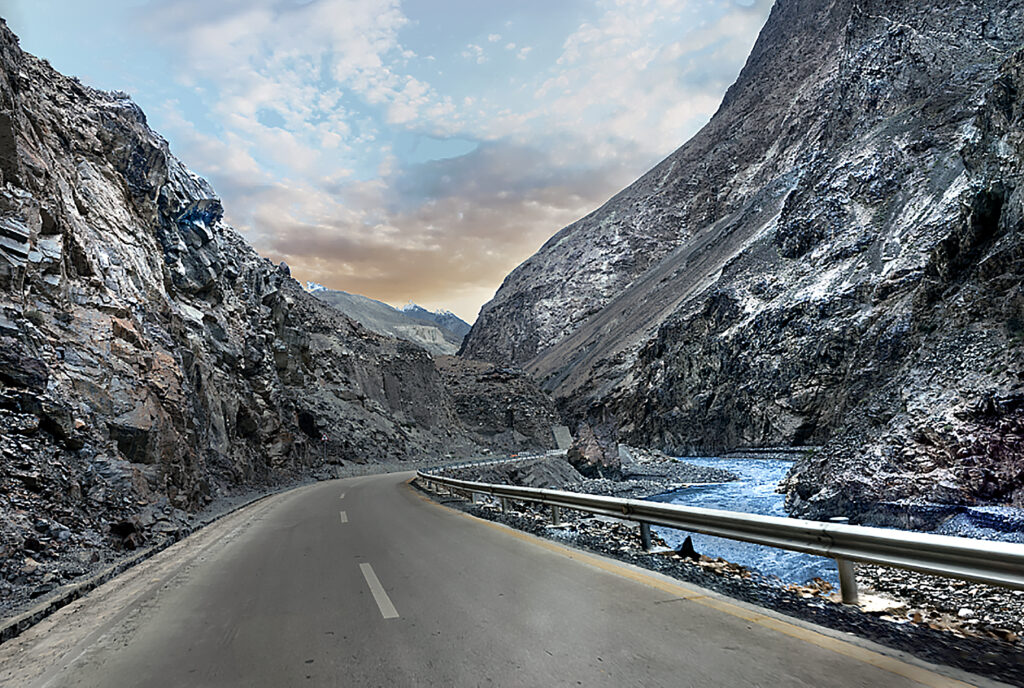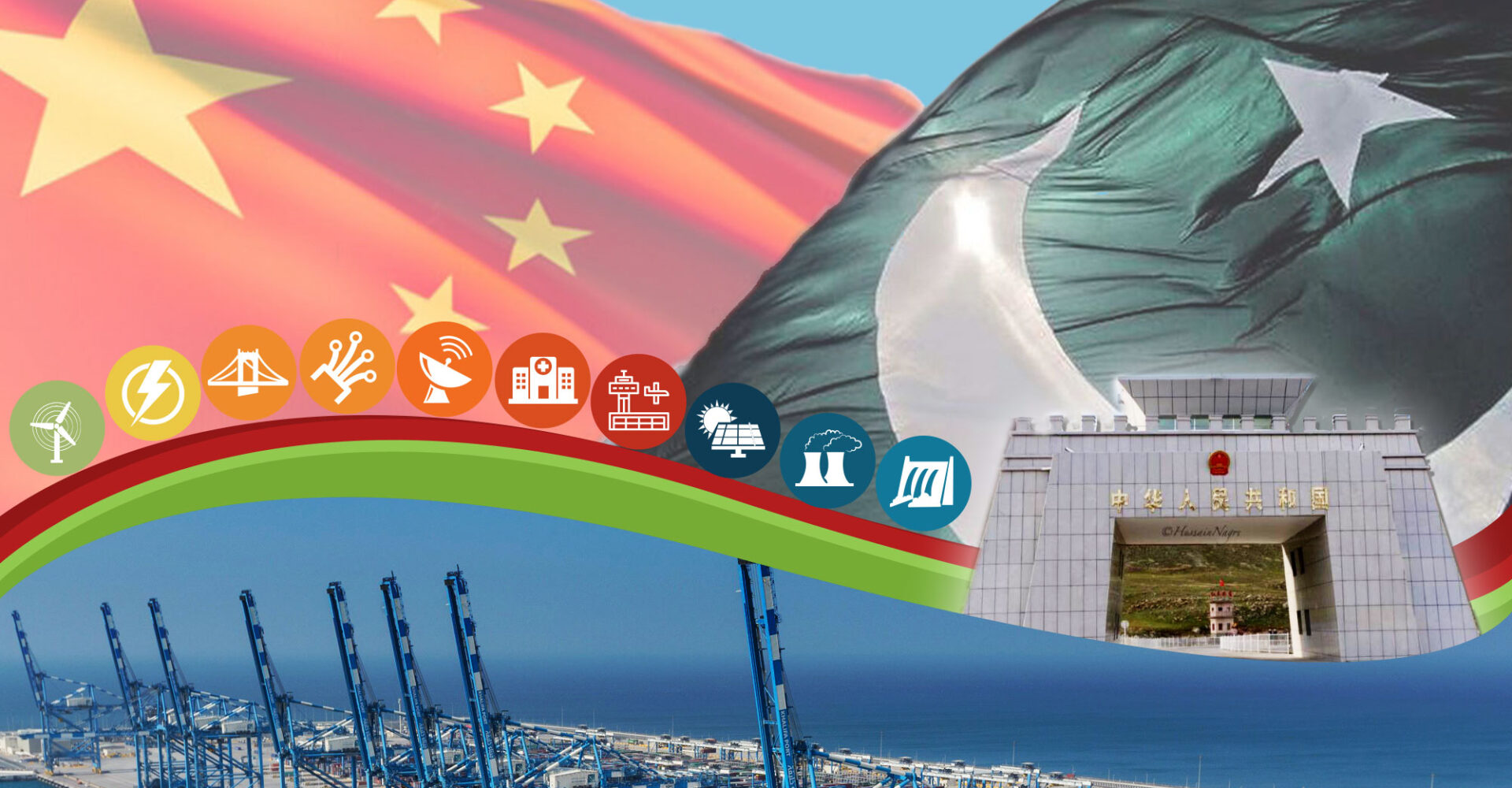Pakistan and China signed a landmark agreement worth $46 billion on April 20, 2015. The project is known as the China-Pakistan Economic Corridor (CPEC). CPEC aims to connect the Pakistani seaport of Gawadar, located on the Balochistan coast of the Arabian sea, with the Chinese city of Kashgar, located in the north-western region of Xinjiang, through a network of rail, road, and oil and gas pipelines. The main focus of the project is on the development of the energy sector which includes $33.8 billion and building infrastructure which involves an $11.8 billion investment. According to the CPEC book released by The Institute of Strategic Studies Islamabad (ISSI).
CPEC is profitable for Pakistan as well as carries extensive economic benefits for the Chinese economy. The first phase of CPEC completed and many mega construction projects of phase-2 including energy and power projects are underway in Pakistan. CPEC could be a game-changer for the region, especially for Pakistan and Iran because they connect directly to this mega project.
“CPEC is a great opportunity for Pakistan. CPEC connects us to China, which is one of the biggest markets. Because of CPEC, we are developing Special Economic Zones (SEZs) which invite investment across the globe. China is a huge market and the CPEC route will connect China and Pakistan located at a strategic position of the world”
Prime Minister of Pakistan Mr. Imran Khan said
CPEC is a major flagship project of China’s ‘One Belt One Road (OBOR)’ initiative. It is a vital project that connects China with Central Asia, the Middle East, and South Asia. Linking China with the Arabian Sea and the Persian Gulf. One Belt One Road (OBOR) initiative includes more than 60 countries. This project will directly benefit the people of China, South Asia, Central Asia, and the Middle East. Analyzed by Mr. Li Xiguang in his article “Building a New Civilization along the One Belt One Road”.
US approves $23.37 billion advanced arms sale to UAE, Pompeo
One Belt One Road (OBOR) initiative will connect two of the world’s most dynamic economic zones, the ‘European Economic Zone’ and the ‘Asia-Pacific Economic Zone’, and make the world’s most auspicious economic corridors and largest economic entities. Thus it is enormously changing the geography of the world economy.
CPEC includes a long highway of 2700 km from Kashgar to Gwadar. The project will create 700,000 new jobs and add up to 2.5 percent to Pakistan’s annual growth rate.

China is 13000 km apart from the Persian Gulf with a shipping time of 45 days. CPEC will shrink that distance of 13000 km to 2500 km (an 80 percent reduction) and shipping time from 45 days to 10 days (78 percent reduction).
CPEC includes $622 million for the development of Gwadar port. The power and energy projects including coal, wind, solar and hydro energy projects cost about $15.5 billion, which will add 10400 megawatts of energy to the national grid of Pakistan.
CPEC project that is signed between Pakistan and China on 20 April 2020, worth $46 billion is approximately 20 percent of Pakistan’s annual GDP, with nearly $28 billion investment from Beijing in immediate projects and remaining assigned for projects in the pipeline. The agreement also includes a $44 million fiber optic cable.
“Several different facets will be utilized for the financing of these projects. Both sides will increase cooperation to jointly provide financing support”.
Said Liu Jianchao, Assistant Foreign Minister of China
CPEC will be completed in four phases. It is a 15-year plan spread from 2015 to 2030.
The first phase focused on the ‘Early Harvest’ scheme was completed in 2018. It involves basic infrastructure development at Gwadar Port and the construction of an international airport with the participation of Chinese companies. Road connectivity that not only connects provinces but an entire region, would also be completed in this phase.
The second phase: includes the setup of a cross-border optical fiber cable system between China and Pakistan; textile, garments, and industrial park projects in Pakistan; numerous ventures in the energy sector harvesting power from various sources i.e hydel, coal, wind, solar and nuclear, construction of dams and installation of nuclear reactors, along with the development of a network of roads, railway lines, and oil and gas pipelines. This phase also includes the construction of a new international airport, Eastbay Expressway, fully equipped hospitals, technical and vocational training institutes, water supply and distribution, infrastructure for free-zone and export processing zones, port-related industries, refineries, and marine works. Besides adding 10,400 megawatts of energy to the national grid, additional 6120 megawatts will also be added to the national grid at approximately $18.2 billion by 2021.
China’s major companies include Three Gorges Corporation (which builds the world’s largest hydropower project). Starting from 2016, these Chinese companies invest an average of over $7 billion a year until 2021. The figure exceeded the previous record of $5.5 billion in Foreign Direct Investment (FDI).
Iranian Hackers target US Military Officials with google account hacks
The third phase: which will be completed in 2025, includes the major up-gradation of Pakistan’s aging railway system, which involves reconstruction of Main Line 1 between Karachi and Peshawar by 2020. This single Main Line 1 handles 70 percent of Pakistan’s total railway traffic. In addition to Main Line 1, expansion and up-gradation projects of Main Line 2 and 3 are also in the pipeline. These Railway construction projects also include the rail link over the 4693-meter high khunjerab pass. The railway projects will provide direct access for Chinese and East-Asian goods to Pakistani seaports at Karachi and Gwadar by 2030.
Acquisition of 250 new passenger coaches and restoration of 21 train stations are also planned as a part of the first phase of the project, bringing the total investment of $5 billion to Pakistan’s railway system, by the end of 2019. 180 of the new coaches are to be built at Pakistan Railways Carriage Factory near Islamabad. The government of Pakistan also plans to build an additional 800 coaches at a later date with the aim of building 595 of those coaches in Pakistan.
The fourth phase, long term projects will be completed in the fourth phase of CPEC until 2030. It includes the construction of a 682 km long Khunjerab Railway line from the city of Havelian to Khunjerab pass on the Chinese border, with the addition to China’s Lanxin railway in Kashgar, Xinjiang. The railway is roughly parallel to the Karakorum Highway and is expected to be completed in 2030. The estimated cost of the project is approximately $12 billion and will require 5 years for completion. Rs. 300 million studies to establish the final feasibility of building the railway line between Havelian and the Chinese border is already underway. The initial feasibility study was already completed in 2008 by the Austrian Engineering firm TBAC.
Iran drops India from key Chabahar mega railway line project
Besides the initial phase, Special Economic Zones (SEZ) will also be developed along the CPEC where Chinese companies will locate factories. Vast manufacturing collaboration between Islamabad and Beijing will include a wide range of products from cheap toys and textiles to consumer electronics and supersonic fighter planes. The main idea of the industrial corridor is to build a sound industrial base, delivered by competitive infrastructure, which is essential for attracting investment into export-oriented industries and manufacturing.
When the country’s labor becomes very expensive to be used to produce low-value products, some poorer country takes over and starts manufacturing and gains prosperity. Once completed, the CPEC with a good industrial base and competitive infrastructure combined with low labor cost is expected to draw growing Foreign Direct Investment (FDI) from manufacturers in many other companies looking for a low-cost location to build products for exports to rich OECD (The Organization for Economic Corporation and Development) nations.
The proposal of Special Economic Zones (SEZ) is already been a successful process. Other than China, Japan, Indonesia, Hong Kong, Malaysia, Taiwan, South Korea, and Vietnam where low-cost manufacturing provides the propulsion to the production of high-end exports. Hence it is anticipated that this time-tested methodology will pay-off in Pakistan as a success story.
Japan lists acquisition of new military equipment to strengthen its capabilities in new domains
CPEC is an important part of the ‘One Belt One Road (OBOR)’ initiative is a top priority of OBOR construction. In the long run, CPEC will play a key role in the success of the OBOR initiative. CPEC is geographically located at the junction of East Asia, South Asia, West Asia, Central Asia, and the Indian Ocean. More importantly, CPEC joins the Silk Road Economic Belt with the land routes in the north and faces in the south, the 21st century Maritime Silk Road on the sea. When the construction of CPEC has achieved the expected goals, the CPEC will surely be the main communication bridge and the strategic channel between the land and maritime silk roads, therefore connecting OBOR. Both the CPEC and OBOR will complement each other. CPEC has the potential to become a strategic hub.
“… We should advance our shared interests and achieve common development. We should use the China-Pakistan Economic Corridor to drive our political cooperation with a focus on Gwadar port, energy, infrastructure development, and industrial corporation so that the fruits of its development will reach both the people in Pakistan and people of other countries in our region…. “
President of China Mr. Xi Jinping, said in his official message
Both these countries China and Pakistan with their ancient civilizations and their traditional friendship can be traced back to 2000 years ago. After the establishment of the diplomatic ties between Beijing and Islamabad back in 1951, both are good friends until now and mutually support and cooperate with each other. China-Pakistan friendship is higher than mountains, deeper than the sea, stronger than steel, and sweeter the honey.
Sources:
- China-Pakistan Economic Corridor (CPEC) official website
- A related article published in Arab News
- CPEC Book pdf file


